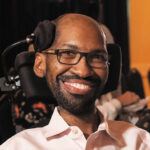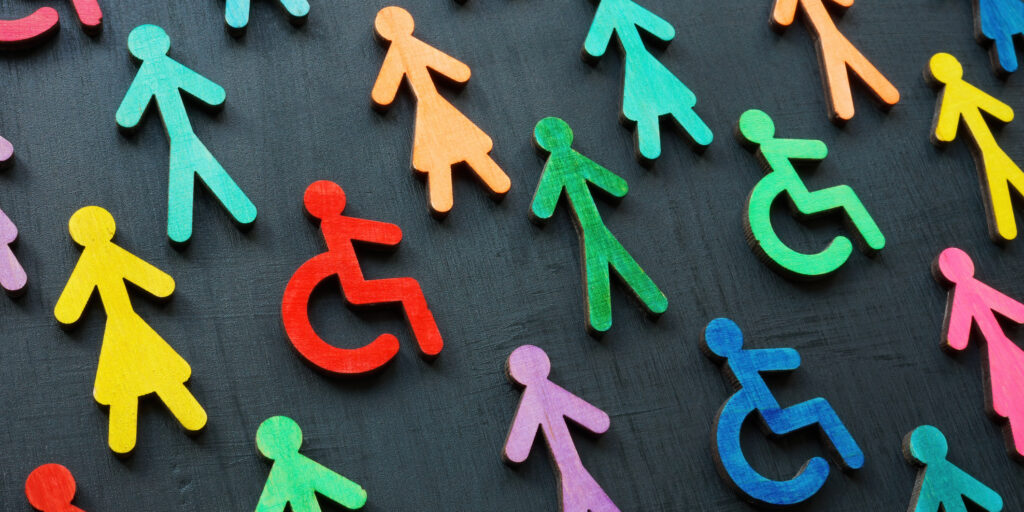
MDA Ambassadors Share Their Favorite Life Hacks
By Amy Bernstein | Tuesday, August 13, 2024
Did you know an MDA Ambassador can be any age and live anywhere in the United States with any neuromuscular diagnosis? This means our current MDA Ambassadors are a pretty varied bunch. But there’s one thing they have in common: They’re great problem-solvers.
That’s why we asked MDA Ambassadors to share some of their favorite life hacks — clever methods of making a common challenge a little (or a lot) easier.

Darci Garcia
Life hacks for hand strength
“My favorite life hack is using fondue forks or wooden skewers to self-feed foods that would usually require a fork. Regular forks are too heavy, and plastic forks are not sharp enough.” — Darci Garcia, amyotrophic lateral sclerosis (ALS), Texas

Mashauna Black
“One life hack that helps me a lot is using gloves with grips on the palms and fingers to pick up items. I use Stix-On safety gloves when I’m in the kitchen to pick up bottles or cans, carry small bags, or even pick up something off the floor. These gloves have been a lifesaver!” — Mashauna Black, limb-girdle muscular dystrophy (LGMD), North Carolina
Life hacks at home

Ira Walker
“My favorite life hack is choosing products that I can control with my phone — from my Nest thermostat to my Victrola record player — which makes life much easier and most accessible!” — Ira Walker, spinal muscular atrophy (SMA), Florida

Amy Shinneman
“My favorite life hack is sleeping in satin pajamas. Sounds silly, but they have changed my life! Turning over and moving in bed can be a challenge, but silky pajamas make it so much easier to just slide with less effort.” — Amy Shinneman, Bethlem myopathy, Indiana
Life hacks on the go

Tana Zwart
“My favorite life hack involves having multiples of my daily go-to items, like sunglasses and car keys. I keep them in different places around myapartment, on my wheelchair, or in my vehicle, so I never have to worry about forgetting them and having to backtrack. When you have a disability, time (and energy) is already compromised, so taking what little steps I can to be proactive and save time and effort is helpful.” — Tana Zwart, facioscapulohumeral muscular dystrophy (FSHD), South Dakota

Stephanie Chicas
“My favorite life hack is using a rolling backpack to put my breathing ventilator in so I can use it and be mobile. This also helps my assistants easily transport the machine instead of carrying it on their shoulders.” — Stephanie Chicas, congenital muscular dystrophy (CMD), Virginia

Fred Graves
“My favorite life hack is for selfie-taking. Here’s how I get a great pic every time, with little to no help: First, I set my phone to take a 4K video. Next, I frame up the shot using a case stand or propping my phone against something. Then, I take a video of myself. When I am done, I can scroll through the video and take screenshots of the best moments.” — Fred Graves, LGMD, Connecticut
Life hacks for style

Allyson Pack-Adair
“One of my favorite life hacks is adding decorative knobs to my dresser. I choose knobs that are larger than the traditional knobs and make the drawers easier to open — and cuter!” — Allyson Pack-Adair, mitochondrial myopathy (MM), Arizona
“One of my favorite life hacks is to wear any kind of shoe that laces up the front. I can open the laces nice and wide and slip my foot in easily without needing to have lots of

Mindy Henderson
flexibility in my ankles. Then I can pull the laces as tight as I want — pulling the laces tight on my shoes once I have them on almost works like a compression sock and keeps the puffiness in my foot to a minimum. Since I am a full-time wheelchair user and don’t have to worry about tripping over my feet, I also buy my shoes a half size to a full size bigger than I need to make them that much easier to get on.” — Mindy Henderson, SMA, Texas
Amy Bernstein is an editor and writer for Quest Media.
Expert Ideas for Easier Independent Living
Occupational therapists (OTs) are professionals who assess challenges and limitations in areas of daily living and propose solutions and modifications. Contrary to a common misconception, many of those recommendations are inexpensive and easy to manage at home.
OT Brooke Aarvig provided these hacks for dressing and undressing:
- Learn to dress in a seated position while shifting your weight on your bottom from side to side. This can be less tiring and safer than standing.
- If one side of your body is weaker than the other, always dress your weak side first and your strong side second. Do the opposite when undressing — undress your strong side first and your weak side second.
- Use a reacher grabber tool to reach your feet and help pull on socks, slippers, or sandals.
Brooke offers many more ideas in Easy, Expert-Level Life Hacks from an Occupational Therapist.
Next Steps and Useful Resources
- Browse the Quest Media Product Guide to find products to help you live a more independent, stylish, and fun life — all hand-picked by MDA Ambassadors.
- Stay up-to-date on Quest content! Subscribe to Quest Magazine and Newsletter.
TAGS: Ambassadors, Community, Equipment and Assistive Devices, Featured Content, Resources, Thrive 365
TYPE: Featured Article
Disclaimer: No content on this site should ever be used as a substitute for direct medical advice from your doctor or other qualified clinician.




